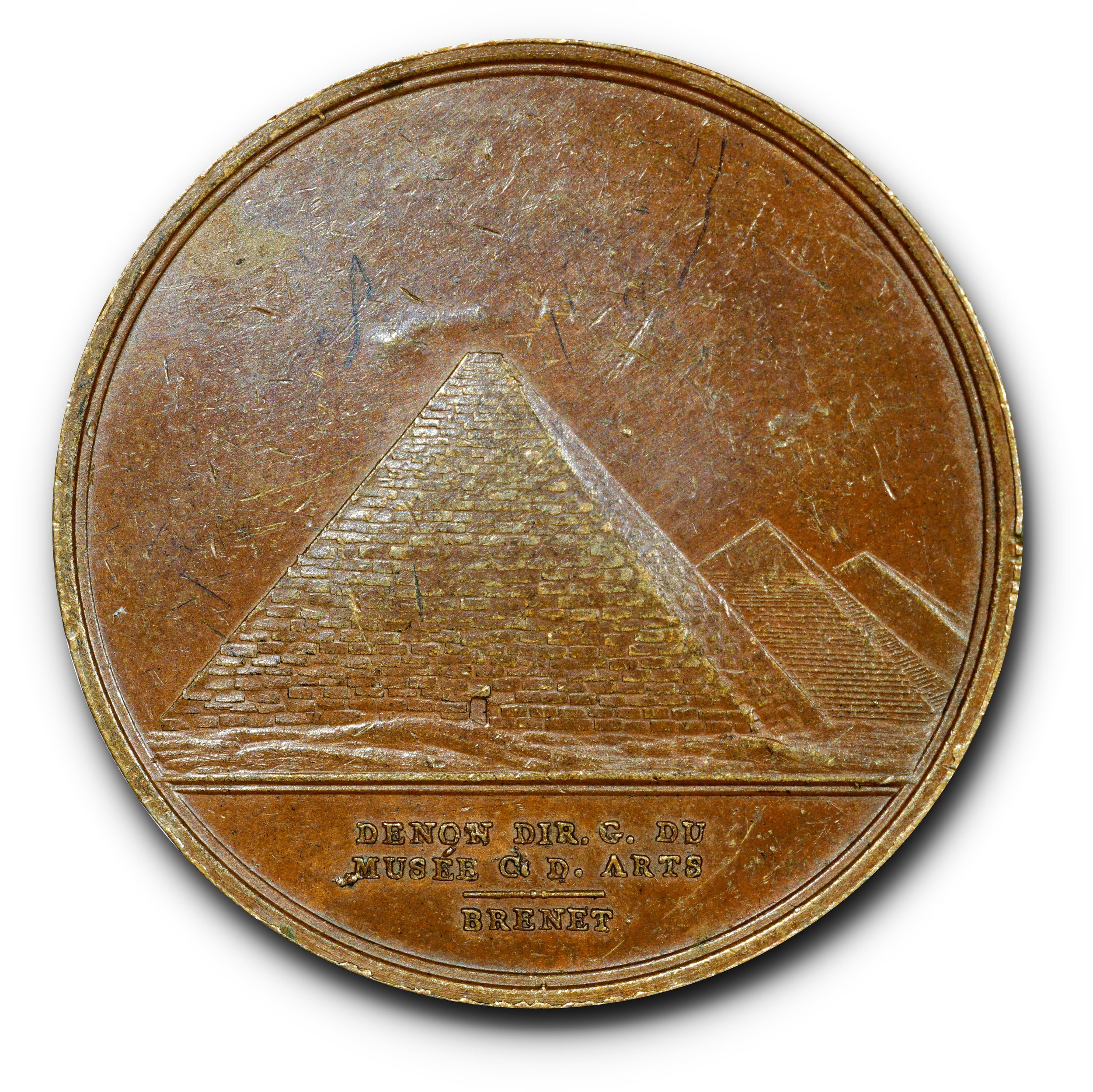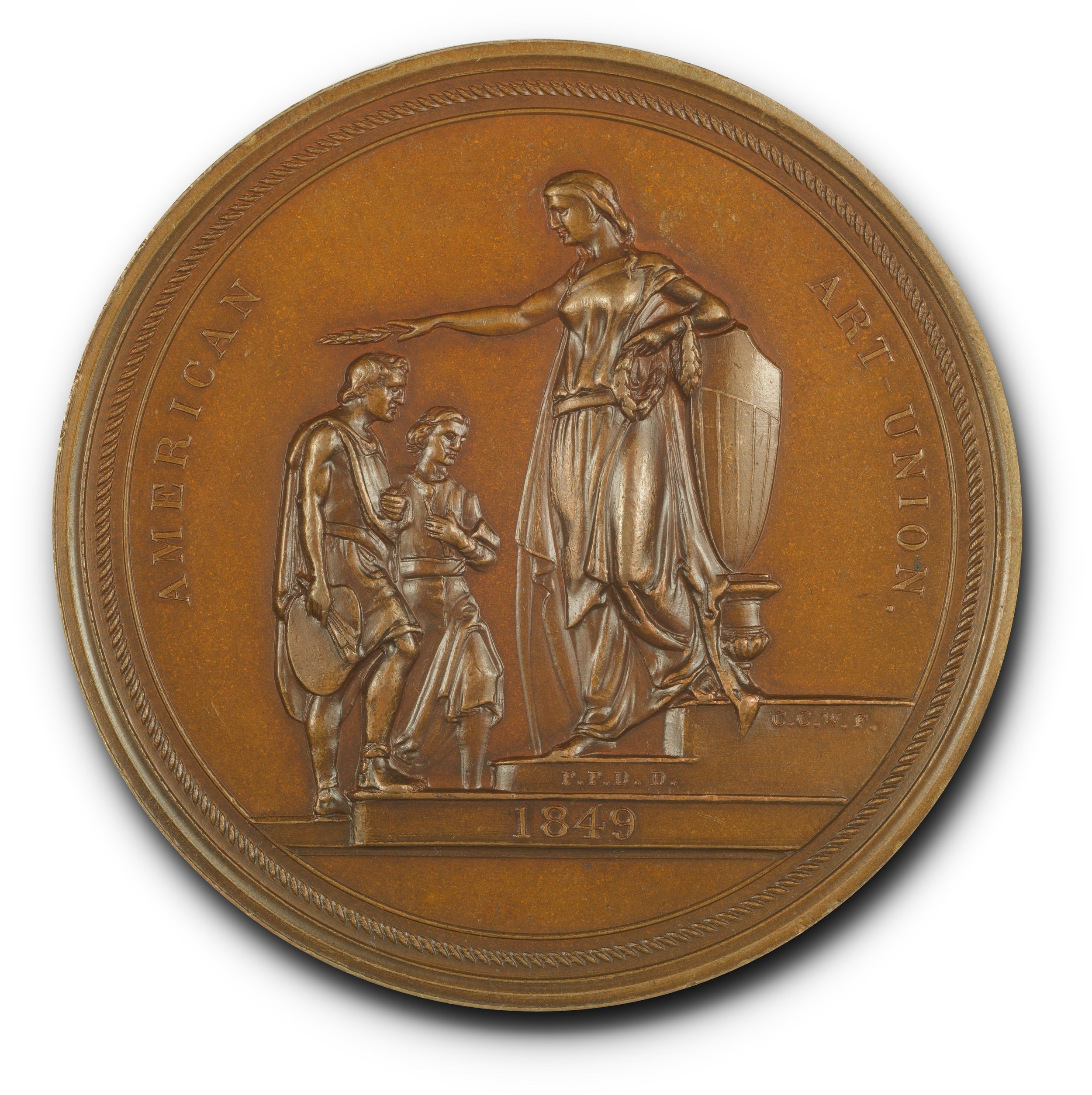 Image 1 of 2
Image 1 of 2

 Image 2 of 2
Image 2 of 2



1873 Maryland Institute for the Promotion of the Mechanic Arts Medal in Silver. Julian AM-31, Harkness Md-20.
51mm. 40.40g. Plain edge. Signed STABLER. Engraved and presented to RICHARD WALTL / FOR / PORCELAIN PHOTOGRAPHS / 1873. Beautifully toned in rainbow patina. The only flaw is a shallow scrape from the barrel to OF on the obverse.
The information below is courtesy of historiccamera.com:
Richard Edmund Walzl was born in the small town of Stein, near Vienna, Austria, on October 14, 1843. The youngest of three sons (John was born in 1833 and Louis was born in 1837), his distinguished family enjoyed an opulent, old-word aristocratic lifestyle. Mr. Walzl Sr. had a successful gold and silversmith business that included the Austrian Emperor among his elite clientele. However, he regarded the United States as a land of greater opportunities for his sons, and so he and his family sailed for America in May 1854. Settling in Baltimore, MD, the elder Walzl brothers quickly found work in the photography trade. John and Louis were daguerreotypists, and John also opened his own supply side business, known as the Southern Stock Depot.
By age 16, Richard had joined the family business as an ambrotypist. His father ensured he received the finest artistic instruction, and he studied photography under the tutelage of local master daguerreotypists Robert Vinton Lansdale and William H. Weaver. The skilled teen applied his love of art and scientific processes into his all-consuming apprenticeship, and by January 1860, the young prodigy opened his own small gallery at 82 W. Baltimore Street. He closed his business briefly to go into the field and photograph the Civil War, and after a few years, he could afford to move into a larger building at 77 W. Baltimore Street, earning enough in profits to repay his father's generosity. After the senior Walzl's death in 1863, Richard graciously bestowed his inheritance upon his other family members. He was already making a good living as a photographer and publisher of ambrotypes, cabinet cards, stereo cards, and cartes des visites. Following his brother John's lead, he also began carrying photographic supplies, and his combination of business acumen and marketing prowess soon established his photographic equipment department as one of the finest of its kind anywhere.
As Mr. Walzl's inventory expanded, so too did his need for more space. In August 1866, he moved to a specially constructed facility at 103 W. Baltimore Street, which he leased for $5,000 yearly. Five years' later, he began publishing a quarterly journal entitled The Photographer's Friend, which quickly became an industry favorite. By 1872, Mr. Walzl was on the move again, and relocated to 46 N. Charles Street, which was twice the size of his previous gallery. The National Photographic Emporium and Publishing House included an imperial art studio as well as supply and literary departments. Finally, in 1874, he had the financial resources to build and furnish a nice home (large enough for a family), and married Henrietta Scheib, daughter of respected local minister Rev. Henry Scheib. The couple would later have two sons and a daughter. In 1878, he began publishing a second quarterly trade journal, Photographic Rays of Light, and in his publications, he experimented with creative advertising that opened lucrative photographic markets in New York and Boston.
After nearly a decade at 46 N. Charles Street, Mr. Walzl moved one last time to 205 W. Baltimore Street. However, his frenetic business pace finally caught up with him, and he never fully recovered from an attack of typhoid fever in 1896. Fifty-five-year-old Richard Walzl died at home on May 10, 1899. At the time of his death, he was the most prosperous photographer and dealer in the Middle Atlantic region.
51mm. 40.40g. Plain edge. Signed STABLER. Engraved and presented to RICHARD WALTL / FOR / PORCELAIN PHOTOGRAPHS / 1873. Beautifully toned in rainbow patina. The only flaw is a shallow scrape from the barrel to OF on the obverse.
The information below is courtesy of historiccamera.com:
Richard Edmund Walzl was born in the small town of Stein, near Vienna, Austria, on October 14, 1843. The youngest of three sons (John was born in 1833 and Louis was born in 1837), his distinguished family enjoyed an opulent, old-word aristocratic lifestyle. Mr. Walzl Sr. had a successful gold and silversmith business that included the Austrian Emperor among his elite clientele. However, he regarded the United States as a land of greater opportunities for his sons, and so he and his family sailed for America in May 1854. Settling in Baltimore, MD, the elder Walzl brothers quickly found work in the photography trade. John and Louis were daguerreotypists, and John also opened his own supply side business, known as the Southern Stock Depot.
By age 16, Richard had joined the family business as an ambrotypist. His father ensured he received the finest artistic instruction, and he studied photography under the tutelage of local master daguerreotypists Robert Vinton Lansdale and William H. Weaver. The skilled teen applied his love of art and scientific processes into his all-consuming apprenticeship, and by January 1860, the young prodigy opened his own small gallery at 82 W. Baltimore Street. He closed his business briefly to go into the field and photograph the Civil War, and after a few years, he could afford to move into a larger building at 77 W. Baltimore Street, earning enough in profits to repay his father's generosity. After the senior Walzl's death in 1863, Richard graciously bestowed his inheritance upon his other family members. He was already making a good living as a photographer and publisher of ambrotypes, cabinet cards, stereo cards, and cartes des visites. Following his brother John's lead, he also began carrying photographic supplies, and his combination of business acumen and marketing prowess soon established his photographic equipment department as one of the finest of its kind anywhere.
As Mr. Walzl's inventory expanded, so too did his need for more space. In August 1866, he moved to a specially constructed facility at 103 W. Baltimore Street, which he leased for $5,000 yearly. Five years' later, he began publishing a quarterly journal entitled The Photographer's Friend, which quickly became an industry favorite. By 1872, Mr. Walzl was on the move again, and relocated to 46 N. Charles Street, which was twice the size of his previous gallery. The National Photographic Emporium and Publishing House included an imperial art studio as well as supply and literary departments. Finally, in 1874, he had the financial resources to build and furnish a nice home (large enough for a family), and married Henrietta Scheib, daughter of respected local minister Rev. Henry Scheib. The couple would later have two sons and a daughter. In 1878, he began publishing a second quarterly trade journal, Photographic Rays of Light, and in his publications, he experimented with creative advertising that opened lucrative photographic markets in New York and Boston.
After nearly a decade at 46 N. Charles Street, Mr. Walzl moved one last time to 205 W. Baltimore Street. However, his frenetic business pace finally caught up with him, and he never fully recovered from an attack of typhoid fever in 1896. Fifty-five-year-old Richard Walzl died at home on May 10, 1899. At the time of his death, he was the most prosperous photographer and dealer in the Middle Atlantic region.
51mm. 40.40g. Plain edge. Signed STABLER. Engraved and presented to RICHARD WALTL / FOR / PORCELAIN PHOTOGRAPHS / 1873. Beautifully toned in rainbow patina. The only flaw is a shallow scrape from the barrel to OF on the obverse.
The information below is courtesy of historiccamera.com:
Richard Edmund Walzl was born in the small town of Stein, near Vienna, Austria, on October 14, 1843. The youngest of three sons (John was born in 1833 and Louis was born in 1837), his distinguished family enjoyed an opulent, old-word aristocratic lifestyle. Mr. Walzl Sr. had a successful gold and silversmith business that included the Austrian Emperor among his elite clientele. However, he regarded the United States as a land of greater opportunities for his sons, and so he and his family sailed for America in May 1854. Settling in Baltimore, MD, the elder Walzl brothers quickly found work in the photography trade. John and Louis were daguerreotypists, and John also opened his own supply side business, known as the Southern Stock Depot.
By age 16, Richard had joined the family business as an ambrotypist. His father ensured he received the finest artistic instruction, and he studied photography under the tutelage of local master daguerreotypists Robert Vinton Lansdale and William H. Weaver. The skilled teen applied his love of art and scientific processes into his all-consuming apprenticeship, and by January 1860, the young prodigy opened his own small gallery at 82 W. Baltimore Street. He closed his business briefly to go into the field and photograph the Civil War, and after a few years, he could afford to move into a larger building at 77 W. Baltimore Street, earning enough in profits to repay his father's generosity. After the senior Walzl's death in 1863, Richard graciously bestowed his inheritance upon his other family members. He was already making a good living as a photographer and publisher of ambrotypes, cabinet cards, stereo cards, and cartes des visites. Following his brother John's lead, he also began carrying photographic supplies, and his combination of business acumen and marketing prowess soon established his photographic equipment department as one of the finest of its kind anywhere.
As Mr. Walzl's inventory expanded, so too did his need for more space. In August 1866, he moved to a specially constructed facility at 103 W. Baltimore Street, which he leased for $5,000 yearly. Five years' later, he began publishing a quarterly journal entitled The Photographer's Friend, which quickly became an industry favorite. By 1872, Mr. Walzl was on the move again, and relocated to 46 N. Charles Street, which was twice the size of his previous gallery. The National Photographic Emporium and Publishing House included an imperial art studio as well as supply and literary departments. Finally, in 1874, he had the financial resources to build and furnish a nice home (large enough for a family), and married Henrietta Scheib, daughter of respected local minister Rev. Henry Scheib. The couple would later have two sons and a daughter. In 1878, he began publishing a second quarterly trade journal, Photographic Rays of Light, and in his publications, he experimented with creative advertising that opened lucrative photographic markets in New York and Boston.
After nearly a decade at 46 N. Charles Street, Mr. Walzl moved one last time to 205 W. Baltimore Street. However, his frenetic business pace finally caught up with him, and he never fully recovered from an attack of typhoid fever in 1896. Fifty-five-year-old Richard Walzl died at home on May 10, 1899. At the time of his death, he was the most prosperous photographer and dealer in the Middle Atlantic region.




